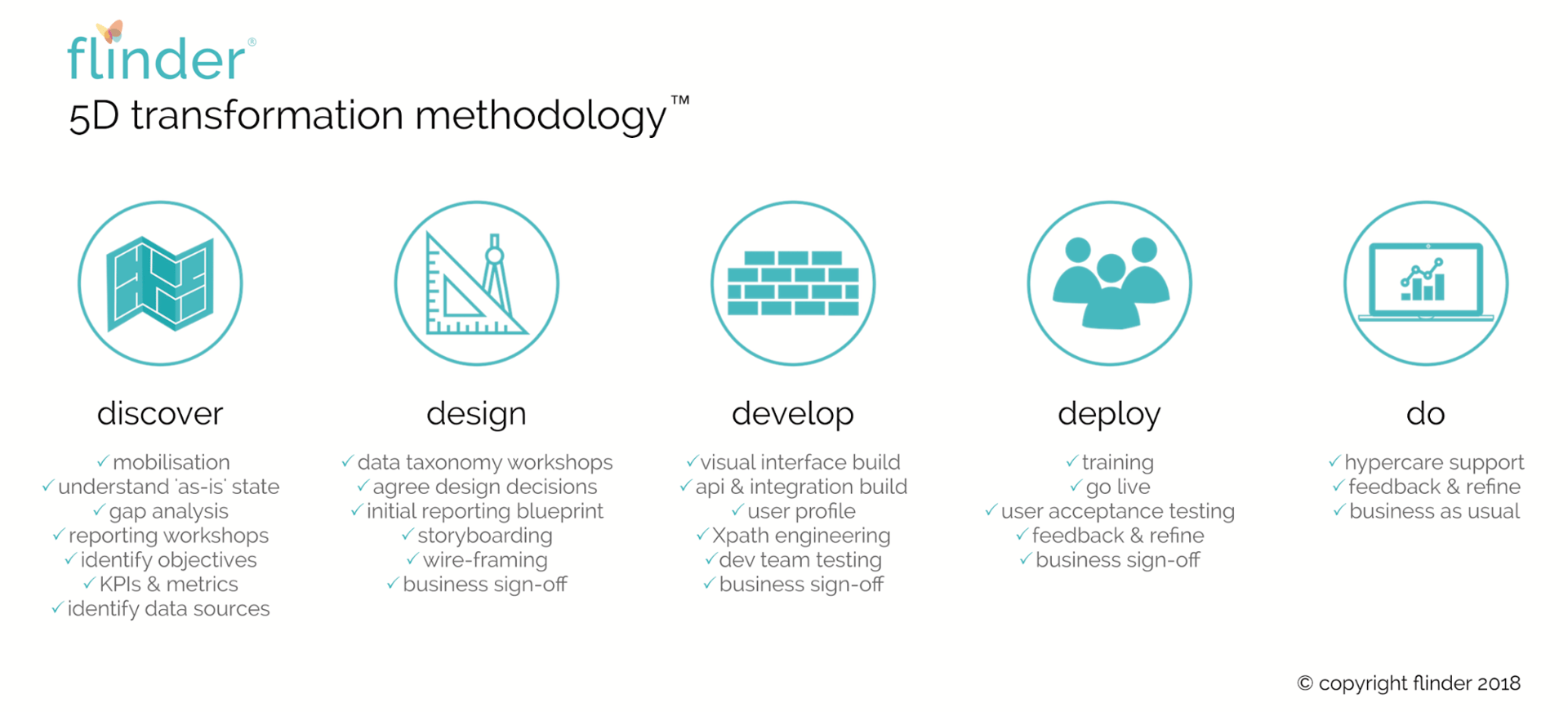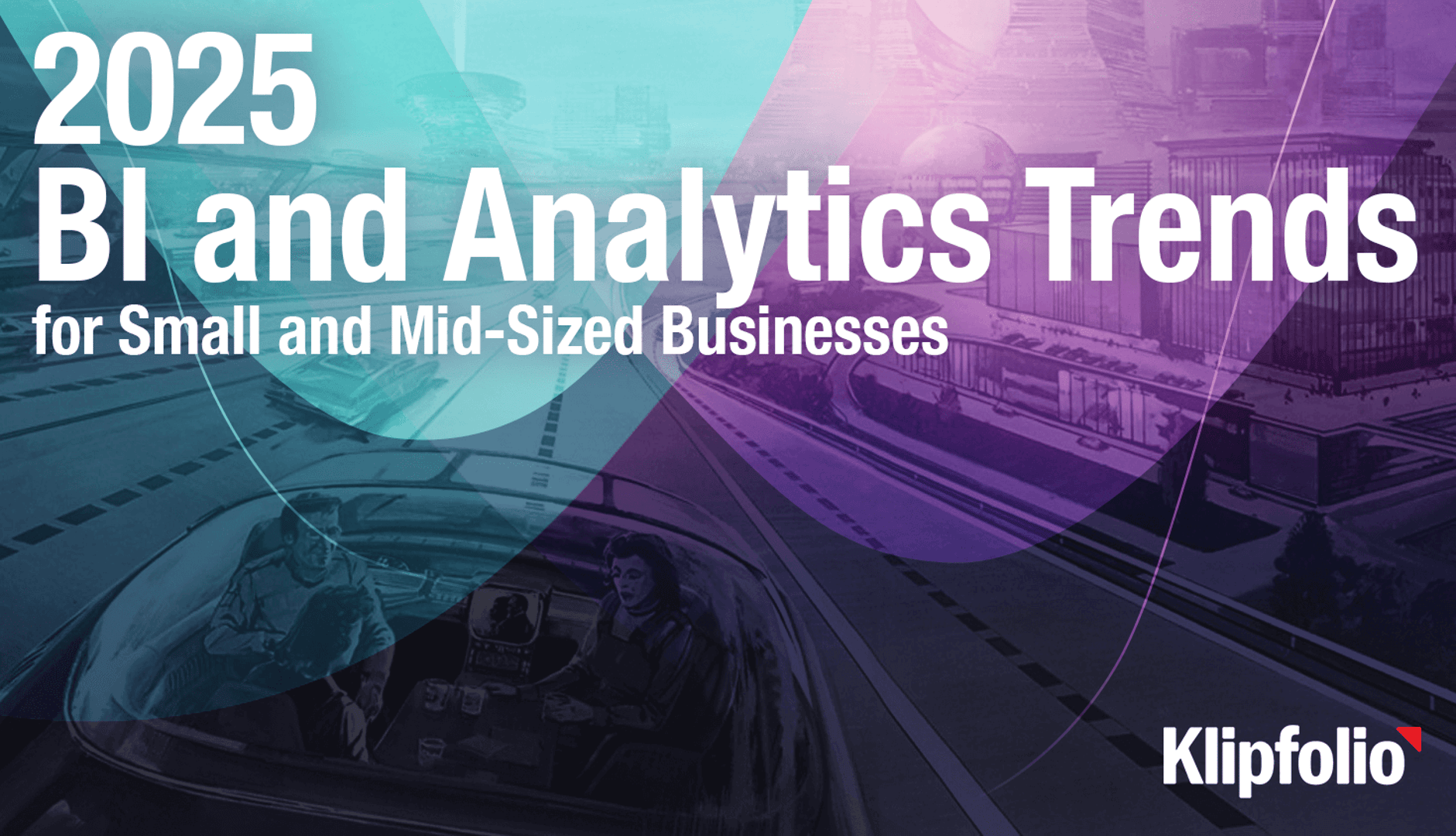How smart businesses are making better decisions

Published 2024-01-02
Summary - Data visualization applications such as Klipfolio are transforming the way in which we view, and more importantly, interpret data. However, rather than just being pretty charts on a screen in the office, the primary purpose is to leverage that data to make better informed, forward-looking decisions.
Data visualization applications such as Klipfolio are transforming the way in which we view, and more importantly, interpret data. However, rather than just being pretty charts on a screen in the office, the primary purpose is to leverage that data to make better informed, forward-looking decisions.
Klipfolio has made it accessible for businesses to take that first step into data visualization with their pre-built Klips, categorized by core application and function – they’ve even built full dashboards to make it easy for users. However, many businesses that are serious about business performance need to move beyond that first step and really tailor what they’re monitoring and measuring to their business. In other words, they need something bespoke where pre-cut Klips will no longer suffice.
In this blog I address two common questions I see when businesses move up that maturity curve.
- What should we be measuring & monitoring?
- How do we get the data structures right to build what we need?
"The purpose of management information is to make proactive and more informed decisions which lead to improved future outcomes."
- Alastair Barlow, CEO & founder, flinder
More performance-focused businesses apply a structured methodology when implementing fully bespoke management reporting. An example of how to do this is using our 5D transformation methodology below which highlights an effective approach to fully implementing real-time reporting (with the first two stages of this approach answering our two initial questions).

DISCOVER: What should we be measuring & monitoring?
Our ‘discover’ phase starts with a reporting requirements workshop; rather than guessing what should be measured and monitored, this actually informs us of what’s important to those actually making business decisions. Therefore, it is fundamental to provide the right information to the decision-makers.
Who are the stakeholders?
First of all, we identify who the relevant decision-making stakeholder groups or individuals are. Often this will identify groups who hadn’t previously been considered. Example stakeholders include:
- Investors
- Board
- Management team
- Head of Product
- Sales Manager
What questions do they ask and what do they need answering?
This is where it’s useful to have a cross section of workshop participants that understand what the stakeholders are typically asking for (or the stakeholders themselves). You can see how diverse the groups are in the example above and they will therefore require different information with varying levels of granularity.
For example, a key question an investor may be asking is ‘when will we run out of cash?’. On the other hand, Head of Product may be more interested in ‘what product feature are customers wanting most?’. This will reveal what each stakeholder needs to make informed decisions and creates alignment between management information, objectives, and business strategy. Too often management information and business strategy are completely disconnected or happen by chance.
What kind of metric or KPI would answer this?
Typically, defining the metric or KPI is as ‘simple’ as the response to the question the stakeholder is asking. For example, if the question is ‘When will we run out of cash?’ then it’s about giving them that future cash zero date i.e. most likely a specific month and year. They may also be interested in seeing cash inflows, outflows, and net cash flows, but at a strategic level, they are interested in a date as this informs a conversation. So, in order to work out and provide this piece of information we would need to forecast cash burn by month and starting cash balance.
For the Head of Product, ‘what product feature are our customers wanting most?’, then providing the most requested features or grouped by feature category (or both) would answer this question. Now there may be more granularity needed for both these examples, but nonetheless, they give you a feel for the concept.
What is important is that we can pinpoint exactly what will answer their questions.
What is their preferred style?
Presentation is important – if it doesn’t suit how the stakeholder wants to interact with it, they won’t use it. The best technology in the world won’t solve any problems unless it’s adopted by its intended audience. I’ve seen it so many times where technology or management reports are simply not used because they are not user-friendly. Understanding if the audience prefers charts, diagrams, large colorful numbers, or plain black-and-white text is imperative and dictates whether the information will actually be used.
DESIGN: How do we get the data structure right to build this?
Often, businesses ‘make-do’ with what they have because they don’t have the correct data structure at the core application level. They pigeonhole metrics & KPIs because they don’t have the data in the core application set up how they need it. However, it shouldn’t and doesn’t have to be this way – high-performing companies are doing it differently, and they are the ones that are getting ahead.
Do we have the data available, and what is the data source?
Now we’ve identified the components that make up the important metric or KPI, we need to establish where the data is coming from and if it’s already available. This may reveal data sources we haven’t previously considered, challenges of where to get the data from, or if we’re even collecting it in the first place.
Is this data in the correct format?
In our example of product feedback requests, we may not be collating this by category or subcategory and so we may never have been able to provide the Head of Product what he really wants is a ‘bottom-up’ approach i.e. working with what we have. If we add our predefined taxonomy of categories and subcategories as a dropdown field in our feedback requests, this would give us the data the way we need it in order to report how our Head of Product stakeholder wants it.
The most powerful way to understand trends and performance is to segment data for which the right data structures and taxonomy are key to getting meaningful segmentation.
Key hint: Start with stakeholders in mind when establishing what information to report.
Conclusion
Smart businesses are adopting a methodology to ensure their metrics and KPIs are aligned to their strategy, and the data they need is available. They are doing this by:
- Obtaining a clear understanding of the audience and the questions they are asking
- Approaching it top-down to change the way data is organized.
Related Articles

2025 BI and Analytics Trends for Small and Mid-Sized Businesses
By Allan Wille, Co-Founder — December 18th, 2024
Promoting data literacy with metrichq.org and the power of AI
By Allan Wille, Co-Founder — October 12th, 2023
Let’s fix analytics so we can stop asking you for dashboards
By Cathrin Schneider — September 11th, 2023

